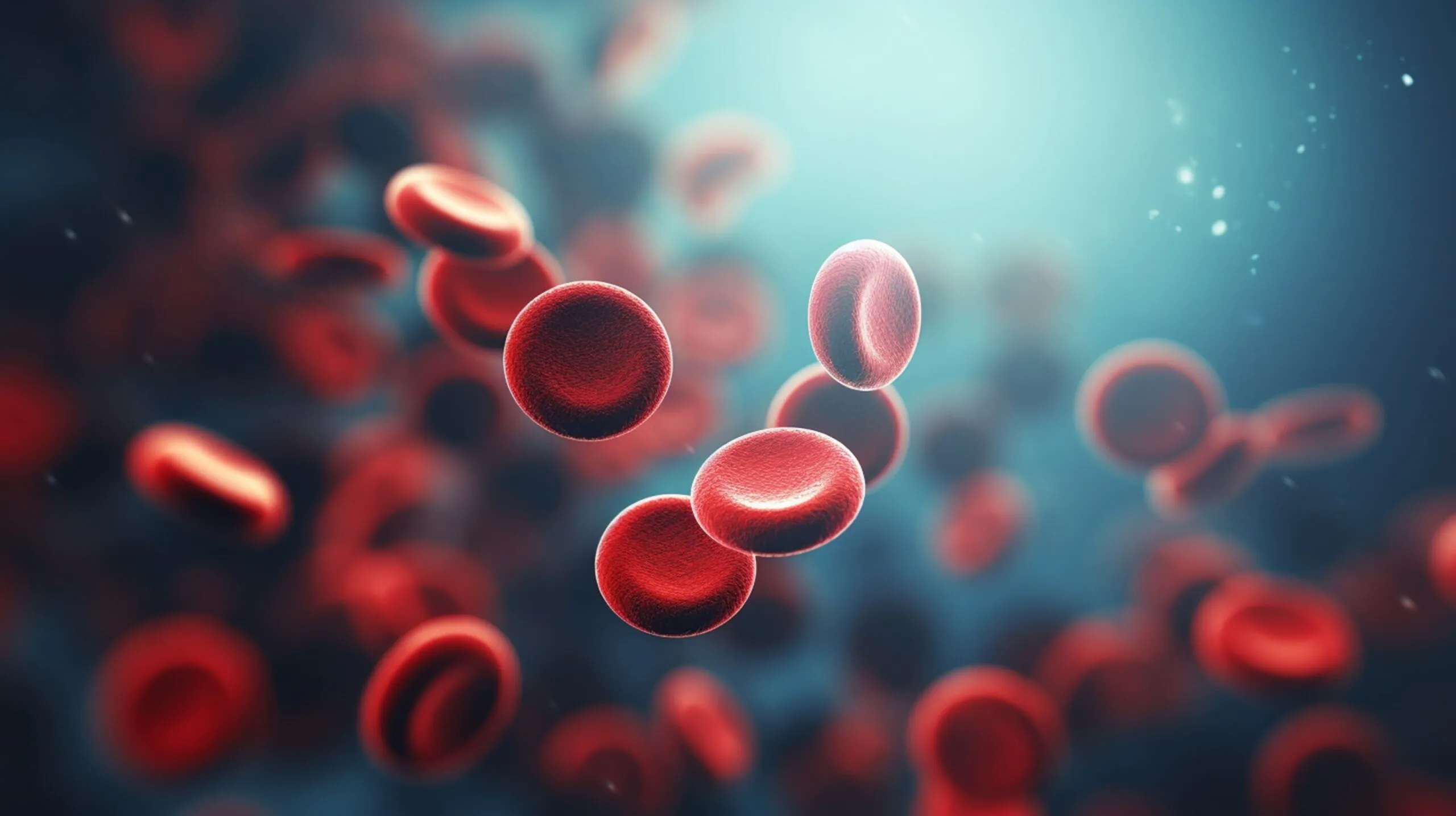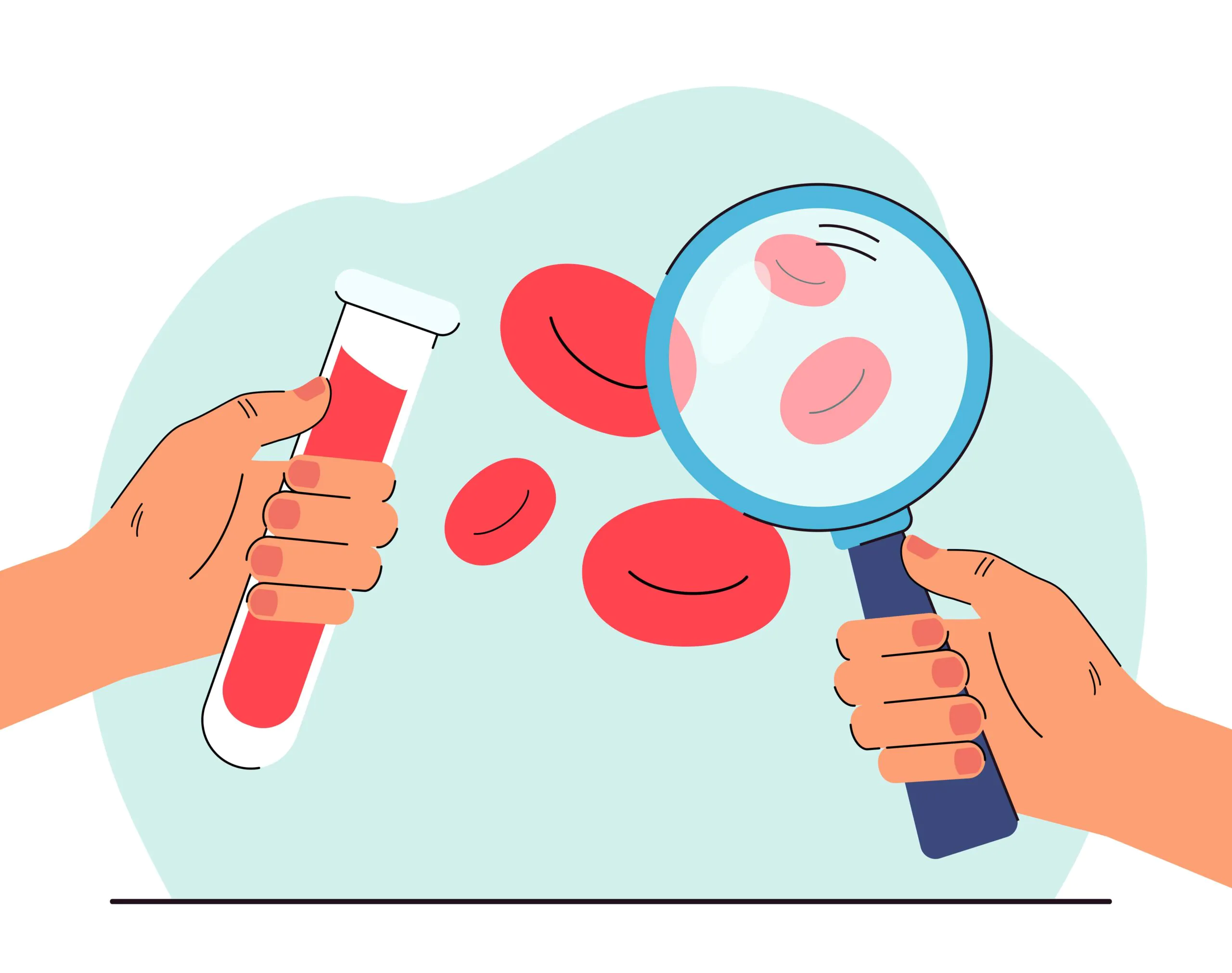
What Are the Symptoms of Iron Deficiency? What Causes Iron Deficiency?
Iron deficiency is an increasingly common health problem in today’s world due to reasons such as the spread of unhealthy eating habits or the fact that access to food has become more difficult. Iron is one of the important elements of metabolism and mediates the proper functioning of many systems in the body. Iron deficiency can lead to serious health problems such as shortness of breath, fatigue with exertion, dizziness over time and negatively affect quality of life.
What is Iron Deficiency?
Iron deficiency is a problem that develops as a result of insufficient intake of iron minerals needed by the body or loss of iron in the body for any reason. In other words, iron deficiency can be mentioned in cases where the total amount of iron in the body is below what it should be. Iron, which is the main component of hemoglobin, whose main task is to transport oxygen to tissues and cells, plays an active role in many important tasks from energy production to the immune system. However, about one-third of people worldwide face the problem of iron deficiency. Malnutrition, blood loss due to various reasons, or various health problems that affect the absorption of iron in the body can cause iron deficiency. Iron plays an active role in many metabolic processes in the human body. Therefore, iron deficiency can cause serious symptoms if it is not noticed early and necessary precautions are not taken. The main functions of iron in the body were as follows:
- It plays a role in the process of transporting oxygen: About two-thirds of the iron in the body is found in the structure of hemoglobin, which is found in red blood cells and allows oxygen to be transported from the lungs to the rest of the body. In other words, iron contributes to the production of red blood cells and hemoglobin and the transport of oxygen throughout the body.
- Enzymes: Many enzymes, which are catalysts that speed up the body’s chemical reactions, have iron in their structure, including those responsible for energy production. In other words, iron mineral plays an important role in the synthesis of enzymes.
- Immune System: Iron is needed for the immune system to perform functions as it should.
- Plays a role in cell division: Iron also plays an active role in the division process of cells.
In addition to those listed, there is also iron mineral in the structure of myoglobin protein, which is found in the structure of the muscles and has an important role in meeting the oxygen needs of the muscles.
What is Iron Deficiency Anemia?
Iron deficiency anemia is a blood disorder in which the hemoglobin level due to iron deficiency falls below the normal value. Iron deficiency progresses in three stages. Although anemia is not seen in the first stage, the total amount of iron in the body is less than it should be. In the second stage, the process of production of red blood cells (erythropoiesis) changes due to insufficient iron in the body, and the production of red blood cells poor in hemoglobin from the bone marrow begins. In the third stage of iron deficiency, since there is not enough iron in the body necessary for the production of red blood cells and hemoglobin, the hemoglobin level falls below the normal value and iron deficiency anemia occurs. The main cause of anemia, which is a common health problem worldwide, is iron deficiency. Studies show that approximately 25% of the general population suffers from anemia, and approximately 50% of anemia cases are caused by iron deficiency.
What are the Symptoms of Iron Deficiency?
Symptoms of iron deficiency usually appear gradually. Experts answer the question “How is iron deficiency diagnosed?” by saying that iron deficiency can often only be understood with the help of routine blood tests. The main symptoms of iron deficiency are as follows:
- Fatigue and weakness,
- Pallor of skin color,
- Dizziness
- Shortness of breath due to insufficient oxygen transport in the body,
- Tingling sensation in the feet and legs,
- Desire to eat substances that do not have any nutritional value, such as soil,
- Disruption in heart rhythm,
- Swelling and pain in the tongue,
- Cold hands and feet,
- Headache
- Nails that break easily.
In addition, if iron deficiency anemia is not diagnosed early, unexplained bruises may occur in different parts of the body.

What Causes Iron Deficiency?
Although there are many different causes of iron deficiency, the main causes are insufficient iron intake and a health problem that affects iron absorption in the body. Iron deficiency in adults, children, and infants can be caused by different causes. Accordingly, the causes of iron deficiency in adults are as follows:
- Not getting enough iron in the diet: A balanced diet plan is important to get the vitamins and minerals the body needs. Especially those who follow vegetarian and vegan diets may be deprived of this mineral due to iron deficiency from animal sources. Additionally, people who live in areas where food access is difficult may also be at higher risk of iron deficiency due to inadequate iron intake.
- Blood loss: Iron deficiency may develop in women if the iron lost due to reasons such as heavy menstrual periods, gastrointestinal bleeding, and frequent blood donation is not replaced.
- Conditions that cause an increase in iron needs: During periods such as pregnancy or breastfeeding, women’s need for iron increases as the vitamins and minerals in the mother’s body will also be used by the baby.
- Excessive physical activity: Intense physical activity can increase red blood cell production, or the excretion of iron from the body through sweat. For this reason, people who exercise regularly, such as athletes, may need more iron.
- Conditions that affect iron absorption: Under normal conditions, about 10% to 15% of the iron taken from food is absorbed in the body of a healthy adult. Digestive system problems such as celiac disease, helicobacter pylori infection in the stomach, or some genetic diseases that disrupt iron absorption metabolism can cause iron to be underutilized by the body.
Although the causes of iron deficiency in children and infants are similar to those of adults, there may be some differences. The causes of iron deficiency in infants and children are as follows:
- Premature birth and low birth weight,
- After 6 months, the baby should be fed only with breast milk, and should not be switched to supplementary food,
- Constant feeding of cow’s milk in children under 2 years of age,
- Low meat consumption,
- Vegetarian and vegan diet
- Various gastrointestinal diseases.
In addition to these, iron deficiency symptoms can be seen in children in cases such as lead poisoning.
What Causes Iron Deficiency in Adults?
Iron deficiency in adults can cause serious complications if left undiagnosed and treated early. The main complications of iron deficiency are:
- Increased risk of contracting infectious diseases,
- Increased risk of heart diseases,
- Psychological problems such as depression.
In addition to those listed, iron deficiency can cause serious complications, especially during pregnancy. Some of the complications associated with iron deficiency in pregnancy are as follows:
- Deterioration in thyroid gland functions such as hypothyroidism (underactive thyroid gland),
- Risk of premature birth or premature birth,
- Placental abruption (premature detachment of the placenta),
- Complications related to high blood pressure during pregnancy, such as preeclampsia (pregnancy poisoning),
- Increased need for cesarean delivery.
In addition, serious complications such as postpartum hemorrhage, need for intensive care, and infection can be seen in women with iron deficiency.
What Is Good For Iron Deficiency? How to Eliminate Iron Deficiency?
Iron deficiency usually goes away on its own with adequate dietary iron intake. However, in cases where the iron in the body is below what it should be and the deficiency cannot be eliminated with food, experts may prescribe iron supplements. In addition to iron supplements, vitamin C can also increase iron absorption in the body, so experts may also recommend vitamin C supplements when needed. In some cases, it is difficult to explain iron deficiency only by insufficient dietary iron intake. Various health problems can also impair the absorption of iron in the body, causing deficiency. For this reason, in the process of iron deficiency treatment, specialists first determine the cause of the deficiency with the help of various examinations and prepare an appropriate treatment plan.
What Are the Foods That Can Be Good for Iron Deficiency?
Under normal conditions, the daily need for iron in the human body is 8-18 mg. Iron intake during pregnancy can be up to 27 mg. Therefore, with a balanced and healthy diet plan, the body’s dietary needs can be met to a large extent. There are two main forms of iron mineral, called both iron and non-ferrous iron. Heme iron is mostly found in offal such as liver and kidney, and in animal foods such as red meat, chicken and fish meat. It is more easily absorbed in the human body than both iron and non-iron. Non-heme iron, on the other hand, is usually found in dark green leafy vegetables such as beans, lentils, broccoli, raisins, nuts, prunes, dried apricots, seeds, dried beans and peas.
Foods as a source of iron
Since iron mineral is not produced in the human body, it is important to meet the body’s daily iron needs through food. Some foods that are sources of iron are:
- Shellfish: Although shellfish are rich in iron, it is important to be careful when consuming these foods, which have the potential to contain heavy metals such as mercury.
- Organ meats: Like the liver, offal are foods with high iron content. For example, 100 grams of liver contains 6.5 mg of iron. This corresponds to approximately 36% of the daily iron requirement.
- Spinach: When it comes to vegetable sources of iron, one of the first vegetables that comes to mind is spinach. 100 grams of spinach contains enough iron to meet about 15% (2.7 mg) of the daily iron requirement. It is known that the absorption of iron found in plants is less than the iron found in animal products. However, spinach is one of the valuable vegetables in this regard. Spinach also contains vitamin C, which is known to increase iron absorption.
- Red meat: Some studies show that those who regularly consume foods such as red meat, fish and chicken meat have a lower risk of iron deficiency. About 100 grams of red meat contains 2.7 mg of iron. At the same time, red meat is rich in other nutrients such as protein, zinc, selenium and B complex vitamins.
- Legumes: Legumes such as lentils, chickpeas, and beans are a good source of iron, especially for vegans and vegetarians. For example, 198 grams of green lentils contain 6.6 mg of iron.
In addition to those listed, foods such as dark chocolate and pumpkin seeds also have a high iron content. However, foods may not always be effective in treating iron deficiency. Therefore, it is important to consult a specialist doctor in cases where iron deficiency is suspected.




